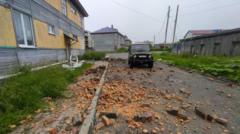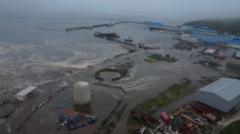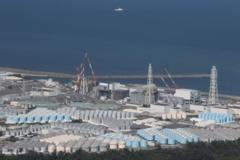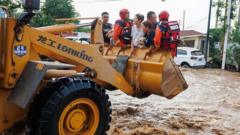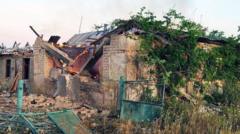Following a significant 8.8 magnitude earthquake near Russia's Kamchatka Peninsula, tsunami warnings were issued across the Pacific, prompting evacuations in several countries. Initial reports indicated little serious damage, and many warnings have since been downgraded.
Powerful Russian Earthquake Triggers Tsunami Alerts Across the Pacific

Powerful Russian Earthquake Triggers Tsunami Alerts Across the Pacific
A magnitude 8.8 earthquake off Russia's coast leads to widespread evacuations from Japan to Hawaii and the U.S. west coast.
A potent earthquake measuring 8.8 in magnitude struck off the coast of Russia's Kamchatka Peninsula, prompting immediate tsunami warnings and mass evacuations across the Pacific region. The quake, occurring at 11:25 local time on Wednesday, was among the most powerful recorded and generated widespread alarm across countries including Japan, the U.S., and Hawaii.
Although early assessments reported no substantial damage or injuries, thousands of residents from Russia's far-east to northern Japan sought higher ground as tsunami warnings rang out. As the situation unfolded, many areas began downgrading their alerts in response to waning concerns.
Reports from the U.S. indicate waves rolling inward, particularly off the coast of California, where Crescent City registered waves of 1.09 meters (3.6 feet). In Southern California, the weather service noted a rapidly rising tide at Port San Luis, leading to continued caution among residents. In Hawaii, where initial evacuations took place, waves reached heights of 1.2 meters (4 feet) on Oahu and 1.7 meters on Maui. Governor Josh Green emphasized the dangers of the situation, although later messages revealed that no significant impact was recorded in Hawaii.
In Russia, tsunami waves reportedly hit coastal communities such as Severo-Kurilsk, although options for recovery were swiftly initiated as officials lifted tsunami warnings for Kamchatka. The earthquake's aftermath saw a temporary state of emergency declared in the Sakhalin region, and damages included compromised buildings in affected towns.
Thousands of Japanese citizens were also awakened by tsunami sirens and advised to take cover as waves above one meter made contact with the Pacific coastline. Nearly two million individuals in the Iwate prefecture were evacuated, but subsequent reports indicated that the tsunami threat was lowered to advisory levels. Prime Minister Shigeru Ishiba reported no immediate concerns regarding damage, while the Fukushima nuclear facility assured the public of its safety post-evacuation.
Further advisories were issued for coastal communities in British Columbia and nations such as Peru, where vigilance remains critical against potential surges. Alerts for areas including Papua New Guinea, the Solomon Islands, and other countries across the Pacific remain active as officials continue to monitor the situation.
The U.S. Geological Survey linked the earthquake to one of the top ten most powerful tremors in recorded history, emphasizing its far-reaching implications and need for precaution across several regions globally.

